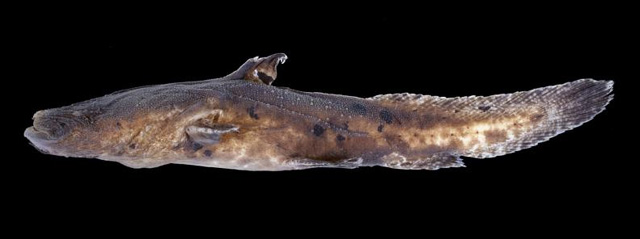|
Dorsal spines (total): 1-1; Dorsal soft rays (total): 4-4; Vertebrae: 33-35. Distinguished from Chaca bankanensis by the absence (vs. presence) of a series of rugose ridges on the oral margin of the lower lip, and by having generally longer dorsal and ventral procurrent caudal-ray bases (32.8-37.3% SL vs. 29.4-32.8 and 16.0-19.2% SL vs. 13.6-16.3 respectively), and from both Chaca burmensis and Chaca chaca in having (vs. lacking) nasal barbels, four pectoral-fin rays (vs. five), and lacking (vs. having) a row of
fimbriate skin flaps on the body dorsal to (and sometimes ventral to) the lateral line. Further differs from Chaca burmensis by the presence (vs. absence) of papillae around the eyes, a temporal fossa extending (vs. not extending) to the supraoccipital, and fewer serrae on the anterior edge of the pectoral spine (7-8 vs. 11-19) (Ref. 89888)
Description: anal fin with ii,4, ii,4,i, ii,5,i, ii,6, iii,3,ii, iii,4,i, iii,5, iv,3,i, iv,4 or iii,6 rays (Ref. 89888) |
